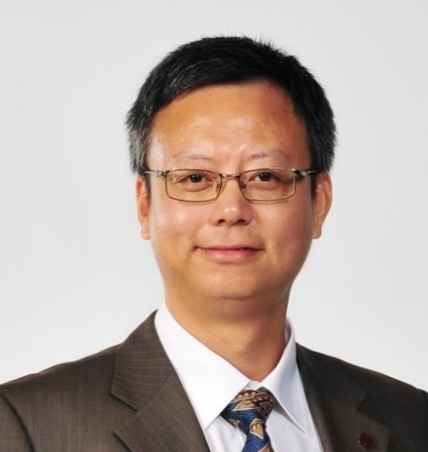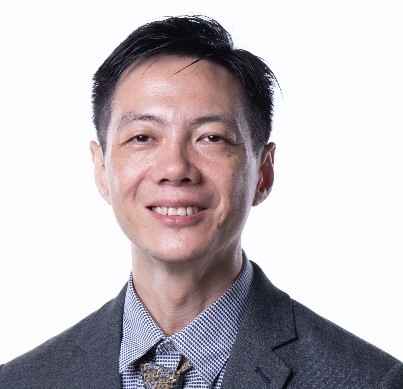报告题目:Phase Engineering of Nanomaterials (PEN)
报告人:张 华 教授
邀请人:霍峰蔚 教授
报告时间:2023年11月13日(星期一)9:00
报告地点:科技D楼1903会议室
报告摘要
Phase Engineering of Nanomaterials (PEN)
Hua Zhang
Department of Chemistry, City University of Hong Kong, Hong Kong, China
Hong Kong Branch of National Precious Metals Material Engineering Research Center (NPMM), City University of Hong Kong, Hong Kong, China
Shenzhen Research Institute, City University of Hong Kong, Shenzhen, 518057, China
E-mail: hua.zhang@cityu.edu.hk
Website: https://www.cityu.edu.hk/chem/people/academic-staff/HZHANG; https://scholars.cityu.edu.hk/en/persons/hua-zhang(8f4e048e-884d-4f19-b2b4-ca4d3d53c515).html Google Scholar: https://scholar.google.com/citations?user=Cgo45S8AAAAJ&hl=en
In this talk, I will summarize the recent research on phase engineering of nanomaterials (PEN) in my group, particularly focusing on the rational design and synthesis of novel nanomaterials with unconventional phases for various promising applications. For example, by using wet-chemical methods, for the first time, we have successfully prepared novel Au nanostructures (e.g., the hexagonal-close packed (hcp) 2H-Au nanosheets, 4H-Au nanoribbons, and crystal-phase heterostructured 4H/fcc and fcc/2H/fcc heterophase Au nanorods), epitaxially grown metal nanostructures on the aforementioned unconventional Au nanostructures and 2H-Pd nanoparticles, and amorphous/crystalline heterophase Pd, PdCu, Rh and Rh alloy nanosheets. In addition, by using gas-solid reactions, metastable 1T'-phase group VI transition metal dichalcogenides (TMDs), e.g., WS2, WSe2, MoS2, MoSe2, WS2xSe2(1-x) and MoS2xSe2(1-x), have been prepared. Moreover, the salt-assisted 2H-to-1T' phase transformation of TMDs have been achieved, and the phase transformation of TMDs during our developed electrochemical Li-intercalation process has been observed. Impressively, the lithiation-induced amorphization of Pd3P2S8 has been achieved. Currently, my group focuses on the investigation of phase-dependent physicochemical properties and applications in catalysis, (opto-)electronic devices, clean energy, chemical and biosensors, surface enhanced Raman scattering, photothermal therapy, etc., which we believe is quite unique and very important not only in fundamental studies, but also in future practical applications. Importantly, the concepts of phase engineering of nanomaterials (PEN), crystal-phase heterostructures, and heterophase nanomaterials are proposed.
Keywords: Phase engineering of nanomaterials (PEN); Noble metal nanomaterials; Transition metal dichalcogenides; Crystal phases; Unconventional phases; Amorphous phase; Crystal-phase heterostructures; Heterophase nanomaterials
个人简介

Dr. Hua Zhang obtained his B.S. and M.S. degrees at Nanjing University in China in 1992 and 1995, respectively, and completed his Ph.D. with Prof. Zhongfan Liu at Peking University in China in July 1998. He joined Prof. Frans C. De Schryver’s group at Katholieke Universiteit Leuven (KULeuven) in Belgium as a Research Associate in January 1999. Then he moved to Prof. Chad A. Mirkin’s group at Northwestern University as a Postdoctoral Fellow in July 2001. He started to work at NanoInk Inc. (USA) as a Research Scientist/Chemist in August 2003. After that, he worked as a Senior Research Scientist at Institute of Bioengineering and Nanotechnology in Singapore from November 2005 to July 2006. Then he joined the School of Materials Science and Engineering in Nanyang Technological University (NTU) as an Assistant Professor. He was promoted to a tenured Associate Professor on March 1, 2011, and Full Professor on Sept. 1, 2013. In 2019, he joined the Department of Chemistry in City University of Hong Kong as a Chair Professor, and currently he is the Herman Hu Chair Professor of Nanomaterials.
He has published 8 invited book chapters, 90 patent applications (including granted 1 China patent, 1 European patent, 3 Singapore patents, and 10 US patents), and over 500 papers. Some of his papers have been published in Nature (1), Science (1), Nat. Mater. (3), Nat. Chem. (5), Nat. Catal. (2), Nat. Rev. Mater. (2), Nat. Rev. Chem. (1), Nat. Commun. (13), Sci. Adv. (2), Nat. Protocols (1), Chem. Rev. (3), Chem. Soc. Rev. (16), Acc. Chem. Res. (4), Acc. Mater. Res. (1), J. Am. Chem. Soc. (29), Angew. Chem. Int. Ed. (29), Adv. Mater. (74), Energy Environ. Sci (12), Mater. Today (1), Adv. Energy Mater. (9), Chem (3), Natl. Sci. Rev. (4), ACS Nano (33), Nano Lett. (17), Adv. Funct. Mater. (5), Nano Energy (6), Energy Storage Mater. (1), ACS Catal. (1), Small (70), Small Methods (3), Nano-Micro Lett. (1), Mater. Horizons (2), Biomater. (1), Biosens. Bioelectron. (2), J. Mater. Chem. A (4), Matter (2), NPG Asia Mater. (1), J. Hazard. Mater. (1), Nanoscale Horizons (2), Appl. Mater. Today (1), J. Mater. Chem. (9), etc. As at Oct. 2023, the total cited times are over 117,500 with H-index of 172 (Web of Science), and over 137,700 with H-index of 182 (Google Scholar). He has been invited to give more than 300 Plenary, Keynote or Invited Talks in international conferences, universities and institutes. He has organized several tens of international conferences and served as the Conference (Co-)Chair or Symposium Chair.
He is the co-Editor-in-Chief of SmartMat (2020-) and co-Chairman of the Editorial Board of ChemNanoMat (2015-), and sits on the Advisory Board of Chemical Society Reviews (2012-2019), Aggregate (2020-present), Chemical Journal of Chinese Universities (2019-), Materials Chemistry Frontiers (2016-), Matter (2019-), Nanoscale (2012-), Nanoscale Horizons (2015-) and NPG Asia Materials (2018-), the Editorial Advisory Board of ACS Nano (2014-), Advanced Functional Materials (2018-), Advanced Materials (2019-), Small (2012-), ACS Appl. Mater. Interfaces (2014-2019), Chem. Mater. (2014-2019) and Nanofabrication (2012-2020), the Editorial Board of 2D Materials (2022-), ACS Omega (2016-), Acta Physico-Chimica Sinica (2020-), Applied Materials Today (2015-), Carbon (2013-), CHEM (2016-), Chemistry-Methods (2020-), Chinese Science Bulletin (2014-), Electron (2023-), Energy Storage Materials (2015-), EnergyChem (2018-), eScience (2020-), Graphene Technology (2016-), Materials Today Energy (2016-), NANO (2007-2020), Nano Convergence (2020-), npj 2D Materials and Applications (2016-), National Science Review (2023-), Research (2021), The Innovation (2020-), Transactions of Tianjin University (2019), and Science China Materials (2014-), the International Advisory Board of Chemistry – An Asian Journal (2018-), the International Advisory Board of Materials Research Express (2014-2016) and the International Editorial Board of ChemPlusChem (2012-2015), and the Scientific Advisory Board of Small Methods (2017-).
In 2020, he was elected as a Foreign Fellow of the European Academy of Sciences (EurASc). In 2015, he was elected as an Academician of the Asia Pacific Academy of Materials (APAM). In Nov. 2014, he was elected as a Fellow of the Royal Society of Chemistry (FRSC). In 2022, he was listed in the "Highly Cited Researchers" in Chemistry, Environment and Ecology, and Materials Science (Clarivate Analytics). In 2015-2021 (7 consecutive years), he was listed in the "Highly Cited Researchers" in Chemistry and Materials Science (Clarivate Analytics/Thomson Reuters). In 2015, he was listed as one of 19 “Hottest Researchers of Today” in the world in the World’s Most Influential Scientific Minds 2015 (Thomson Reuters, 2015). In 2014, he was listed in the "Highly Cited Researchers 2014" in Materials Science, and also listed as one of 17 “Hottest Researchers of Today” and No. 1 in Materials and More in the world in the World’s Most Influential Scientific Minds 2014 (Thomson Reuters, 2014). Moreover, he got the IUMRS-Frontier Materials Scientists Award (2023, IUMRS-ICFM), EcoMat Mid-Career Research Award (2023, Wiley-VCH), Outstanding Research Award (2022, City University of Hong Kong), President’s Award (2021, City University of Hong Kong), Young Investigator Award (Young Giants of Nanoscience 2016, Hong Kong), Vice-Chancellor’s International Scholar Award (University of Wollongong, Australia, 2016), ACS Nano Lectureship Award (2015), World Cultural Council (WCC) Special Recognition Award (2013), the ONASSIS Foundation Lectureship (Greece, 2013), Asian Rising Stars (15th Asian Chemical Congress, 2013), SMALL Young Innovator Award (Wiley-VCH, 2012) and Nanyang Award for Research Excellence (2011).
Dr. Zhang’s research is highly interdisciplinary. His current research interests focus on phase engineering of nanomaterials (PEN) and controlled epitaxial growth of heterostructures, including the synthesis of ultrathin two-dimensional nanomaterials (e.g., metal nanosheets, graphene, metal dichalcogenides, metal-organic frameworks, covalent organic frameworks, etc.), novel metallic and semiconducting nanomaterials, novel amorphous nanomaterials, and their hybrid composites for various applications, such as catalysis, clean energy, (opto-)electronic devices, chemical and biosensors, and water remediation.
报告题目:Electrocatalytic nitrogen fixation
报告人:颜清宇 教授
邀请人:霍峰蔚 教授
报告时间:2023年11月13日(星期一)10:00
报告地点:科技D楼1903会议室
报告摘要
Electrocatalytic nitrogen fixation
Yan Qingyu
School of Materials Science and Engineering, Nanyang Technological University, Singapore
The industrial synthesis of ammonia (NH3), a key feedstock for synthetic fertilizer, is relying on traditional Haber-Bosch approach under extremely harsh conditions (100−200 bar and 400−500 °C). Nitrogen fixation via electrocatalytic process provides an intriguing route at ambient conditions, potentially realizing a sustainable approach when driven by renewable electricity (wind power, hydroelectric power, etc.). In this presentation, we will discuss our recent works on the electrocatalytic processes of nitrogen oxidation, nitrogen reduction, and urea synthesis. The role of new catalyst design and analysis of the reaction pathway will be presented.
个人简介

Qingyu Yan 现任南洋理工大学材料科学与工程学院教授。他在南京大学获得材料科学与工程学士学位。他在纽约州立大学石溪分校材料科学与工程系获得博士学位。之后,他作为博士后研究员加入伦斯勒理工学院材料科学与工程系。 2008年初加入南洋理工大学材料科学与工程学院,任助理教授,2018年晋升教授。现任电化学学会新加坡分会副主席。他自 2018 年起成为皇家化学学会会士。他是 2018 -2023 年材料科学领域的高被引学者(web-of-science) 。他在研究领域发表了超过 300 篇论文:(1)电池开发; (3) 热电材料和 (3) 用于能量转换的电催化过程。
Name: YAN Qingyu (Alex) Present Appointment: Professor
School: Materials Science and Engineering Email: alexyan@ntu.edu.sg, Phone: +65-67904583
Date of 1st Appointment: 11th February, 2008 https://personal.ntu.edu.sg/alexyan/
Academic Qualification:
08/2000 - 12/2004 Ph.D., Materials Sci. & Eng., State University of New York at Stony Brook, USA
08/2000 - 12/2004 B.Eng., Materials Sci. & Eng., Nanjing University, China
Professional Qualifications/Memberships:
Chair, Electrochemical Society, Singapore Section, (March 2017 – now)
Fellow, Royal Society of Chemistry (May 2018 – Now)
Joint Treasurer, Singapore MRS (April 2014- 2016)
Summary of Working Experience:
09/2018 - present Professor, Nanyang Technological University, Singapore
03/2013 – 08/2018 Associate Professor, Nanyang Technological University, Singapore
02/2008 - 02/2013 Assistant Professor, Nanyang Technological University, Singapore
01/2005 - 10/2007 Postdoc Research Fellow, Rensselaer Polytechnic Institute, USA
08/2000 - 12/2004 Research Assistant, State University of New York at Stony Brook, USA
Awards
1. Tan Chin Tuan Exchange Fellowship in Engineering, 2012
2. Best Poster Award, Next Generation of Batteries Conference, Wollongong, Australia, Aug 2016
3. Best Poster Award, TMS/NY capital district, Albany, NY, USA (2005)
4. Annual Award of International Magnetic Association, 2003
Selected Publications
(Highly cited researcher for Materials Science by Clarivate Analytics Web-of-Science in 2018 and 2019, 2020, >300 papers, total citations from Web of Science: >30000, h-index: 91)
1. Chade Lv, Lixiang Zhong, Hengjie Liu, Zhiwei Fang, Chunshuang Yan, Mengxin Chen, Yi Kong, Carmen Lee, Daobin Liu, Shuzhou Li,* Jiawei Liu, Li Song,* Gang Chen, Qingyu Yan,* Guihua Yu,* “Selective electrocatalytic synthesis of urea with nitrate and carbon dioxide”, Nature Sustainability (2021) DOI: doi.org/10.1038/s41893-021-00741
2. Chunshuang Yan,§ Chade Lv,§ Liguang Wang, Wei Cui, Leyuan Zhang, Khang Ngoc Dinh, Huiteng Tan, Chen Wu, Tianpin Wu, Yang Ren, Jieqiong Chen, Zheng Liu, Madhavi Srinivasan, Xianhong Rui,* Qingyu Yan,* and Guihua Yu,* “Architecting a Stable High-Energy Aqueous Al-Ion Battery”, Journal of the American Chemical Society 142 (36), (2020), p15295-15304
3. Yubo Luo, Shiqiang Hao, Songting Cai, Tyler J. Slade, Zhong Zhen Luo, Vinayak P. Dravid, Chris Wolverton, Qingyu Yan,* Mercouri G. Kanatzidis,* “High Thermoelectric Performance in the New Cubic Semiconductor AgSnSbSe3 by High Entropy Engineering”, Journal of the American Chemical Society 142 (35), (2020), p15187-15198
4. Chade Lv, Lixiang Zhong, Yao Yao, Daobin Liu, Yi Kong, Xiaoli Jin, Zhiwei Fang, Wenjie Xu, Chunshuang Yan, Khang Ngoc Dinh, Minhua Shao, Li Song, Gang Chen, Shuzhou Li, Qingyu Yan,* Guihua Yu,* “Boosting Electrocatalytic Ammonia Production through Mimicking “π Back-Donation”, Chem 6, (2020), p1-13
5. Yubo Luo, Songting Cai, Shiqiang Hao, Florian Pielnhofer, Ido Hadar, Zhong-Zhen Luo, Jianwei Xu, Chris Wolverton, Vinayak P. Dravid, Arno Pfitzner,* Qingyu Yan,* Mercouri G. Kanatzidis*, “High Performance Thermoelectrics from Cellular Nanostructured Sb2Si2Te6”, Joule 4 (1), (2020), p159-175
6. Zhong-Zhen Luo, Shiqiang Hao, Songting Cai, Trevor P. Bailey, Gangjian Tan, Yubo Luo, Ctirad Uher, Chris Wolverton, Vinayak P. Dravid, Qingyu Yan,* Mercouri G. Kanatzidis2,*, “Enhancement of Thermoelectric Performance for n-type PbS through Synergy of Gap State and Fermi Level Pinning”, Journal of the American Chemical Society 141 (15), (2019), p6403
